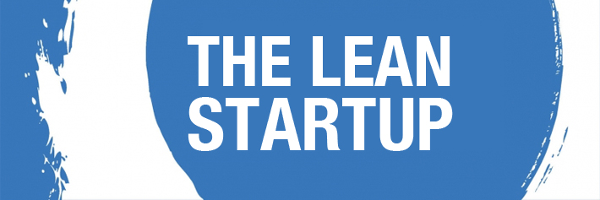
The Lean Startup is a must-read book for any active or aspiring entrepreneur. I was fortunate enough not only to read the book, but to watch a live keynote from Eric Ries, the author. Below you’ll find a summary of what I absorbed from both experiences.
Defining “Startup”
A startup is a human instituion designed to deliver a new product/service under conditions of extreme uncertainty.
The uncertainty is the key aspect, and it involves:
– who are the customer?
– what product/service and features does he want?
– how can we make a viable business model around it?
A startup can be also seen as an experiment, where the goal is to answer to the above questiono. Eric suggests that we can use a scientific approach to make entrepreneurship more efficient.
Learning is The Goal
The biggest problem today is that companies build, very efficiently, things that nobody wants! The challenge, therefore, is to find an efficient way to learn what people actually want!
The initial goal on any startup should be to learn, and not to build or to ship. If you build/ship without being sure about what the customer want and about how you can create a viable business around it, your chances of success are very low.
If you learn what your customers want, however, building and shipping it become much easier tasks.
What we need, therefore, is a system that allow us to identify what we need to learn, and to learn that efficiently (i.e., fast and without spending a lot of money).
Start with the core hypotheses
As stated above, our initial goal is to learn. But to learn what?
We want to learn whether or not the core hypotheses we have about our product/service and business model are true. In other words, are suppositions we hope are true, and without which our business will certainly fail?
Examples of core hypotheses are:
– Our target customers are X and Y
– Our customer will be willing pay X dollars to use the product
– X percent of our customers will purchase again within 30 days
Obviously the hypotheses will vary from startup to startup, so you need to understand which ones are important to your case.
The Build-Measure-Learn Loop
Our goal is to learn and validate our core hypotheses. How do we do that? Using the Build-Measure-Learn loop.
First we need to build something, but that doesn’t mean the product itself. We need to build the easiest thing possible that will allow us to test the core hypotheses. Sometimes this can be a single web page where images and a description of the product will be offered, to test whether or not customers will click on “Buy” or “Download”. Other times an MVP will need to be built.
Once you have something customers can interact with, get the customers in front of it and measure. Measure the percentage of web visitors who will click on the “Order” button, measure for how long they will use your app, measure what percentage will invite friends to download/use your product and so on.
Finally, analyze the data you have and learn whether or not your core hypotheses were true and whether or not you are on the right track.
The goal is to go through the Build-Measure-Learn loop as fast as possible and spending as little money as possible. Any action that goes in this direction should be done. Any action that doesn’t help with the loop should be avoided.
Pivoting is Key
The vast majority of startups start with a flawed idea. What separates the successful startups and entrepreneurs from the ones that fail is the ability to pivot. That is, to change one or more aspects of the business (repeatedly if necessary) until a viable business model is found.
Successful pivots often are grounded on what the startup has learned so far about the market, the product and the customer.
The key is understanding when to pivot, and how to do it efficiently, and you can do that using the Build-Measure-Learn loop described above.

Leave a Reply